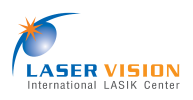Laser Vision
Understanding Glare and its Impact on Vision
Understanding Glare and its Impact on Vision
Glare is a characteristic of light that scatters from its source, forming distinct rays or circles. This effect is often observed in relatively dimly lit environments and is less likely to occur in well-lit surroundings. Glare tends to be more pronounced at night and is frequently encountered by individuals with untreated nearsightedness.
For those experiencing glare, it can be particularly bothersome in dark conditions, potentially causing discomfort and a sense of insecurity, especially while driving at night. Therefore, it's advisable to avoid nighttime driving if you're affected by glare. Alternatively, you may consider using anti-glare glasses or applying eye drops to alleviate the condition and improve your night vision.
** Experiencing glare in well-lit environments and having halos around lights may indicate the onset of cataracts. In such cases, it is essential to promptly consult an ophthalmologist to identify the underlying cause and explore potential treatments. **
Understanding glare and its implications for vision is crucial, as it can significantly impact one's ability to see clearly and safely, particularly in low-light conditions. Seeking professional advice is essential for managing glare-related issues and maintaining optimal eye health.
Cataract Center
Laser Vision
Understanding Age-Related Eye Health Issues and Care
Understanding Age-Related Eye Health Issues and Care
As we age, it's natural to prioritize physical health, working diligently to prevent diseases such as diabetes, heart conditions, and high blood pressure. However, one aspect that often gets less attention is our eye health. Surprisingly, a survey by The International Agency for the Prevention of Blindness (IAPB) revealed that a significant 80% of individuals over the age of 50 experience various eye problems, with some facing the daunting prospect of blindness.
Age-Related Eye Problems
1. Presbyopia: The Age-Related Vision Challenge
This age-related vision issue, known as presbyopia, typically emerges in one's early 40s or later. It's akin to looking through a foggy window, causing a decline in sharpness, particularly noticeable when driving at night.
2. Glaucoma: The Silent Thief of Sight
Glaucoma, characterized by elevated eye pressure, stiffens the eye, affecting peripheral vision while retaining central vision. There are two main types: closed-angle and open-angle glaucoma. Closed-angle glaucoma is more prevalent in elderly women, causing sudden eye pain and blurred vision, necessitating immediate attention. In contrast, chronic open-angle glaucoma is often asymptomatic, making regular eye exams crucial for early detection.
3. Age-Related Macular Degeneration (AMD): A Leading Cause of Vision Loss
Age-Related Macular Degeneration (AMD) is a significant contributor to vision loss in the elderly. It starts with clear peripheral vision but blurry central vision due to macular tissue abnormalities. It often has a hereditary component and is associated with risk factors such as high blood pressure, high cholesterol, obesity, and smoking.
Other Eye Health Concerns
4. Floaters: Understanding Those Pesky Spots
Floaters, those small dark spots or streaks in your vision, can resemble flying insects. These result from changes in the vitreous substance inside the eye. While they're usually harmless, an excessive amount, accompanied by decreased vision, should prompt a visit to an ophthalmologist.
5. Cataracts: The Clouding of Vision
Cataracts, the clouding of the eye's lens leads to reduced vision. Cataracts are common among the elderly and can be related to aging, diabetes, high blood pressure, and smoking. Surgical removal is often necessary when they significantly impair vision.
Regular Eye Health Check-ups
Just like overall physical health, it's vital to schedule regular eye check-ups, at least annually, with a specialist.
Conclusion: Optimizing Eye Health in Your Golden Years
In your pursuit of a healthy and fulfilling life as you age, don't overlook the significance of eye health. By understanding common age-related eye issues and the importance of regular check-ups, you can safeguard your vision and enjoy a vibrant, active lifestyle well into your golden years.
Cataract Center
Laser Vision
What is Cataract?
What is Cataract?
What Are Cataracts?
Cataracts are a common eye condition, especially in older people aged 65 and above. They result from the natural aging of the eye's lens but can also occur due to accidents or being present at birth.
Symptoms: Cataracts cause a gradual, painless clouding of vision. People with cataracts might notice their vision becoming hazy, making it challenging to see clearly, especially in low light. It can also lead to nearsightedness and difficulty driving at night.
Normal Vision
Cataract Vision
Treatment: Cataracts can be treated through a straightforward surgical procedure. During this surgery, the cloudy lens is removed, and an artificial lens is implanted to restore clear vision. Modern cataract surgery is minimally invasive, taking about 30 minutes. It typically involves using ultrasound to break up the cataract and inserting a new lens through a small incision. After the procedure, patients might be prescribed eye drops and should avoid water contact for around two weeks.
Small Incision Lens Removal with Ultrasonic (Phacoemulsification)
IOLs Lens Replacement
The latest advancement in cataract treatment is the bladeless cataract treatment known as FLACs (Femtosecond-Laser Assisted Cataract Treatment). This is another option for patients with late-stage cataracts (late-mature or hyper-mature) where the lens is quite solidified and dense making an ultrasonic breakdown much more difficult and harder for surgeons to manipulate and maneuver the lens removal technique. By using the FLACs, a femtosecond laser can break down the lens into a guideline making the ultrasonic break-up much more precise and easier. This makes the entire cataract treatment process bladeless.
Types of Lenses: There are different types of intraocular lenses (IOLs) available, including mono-focal lenses for clear vision at a specific distance and multifocal lenses that provide clear vision at multiple distances, reducing the need for glasses.
Post-Surgery Care: After cataract surgery, it's important to take prescribed medications and avoid activities that can strain the eyes. Follow-up appointments with your doctor are necessary to monitor your progress.
Location
Laser Vision International LASIK Center
49/5 Laser Vision Building Ratchadaphiseak 48 Alley Ratchadaphiseak Rd. Ladyao Subdistrict Chatujak District Bangkok 10900 Thailand



